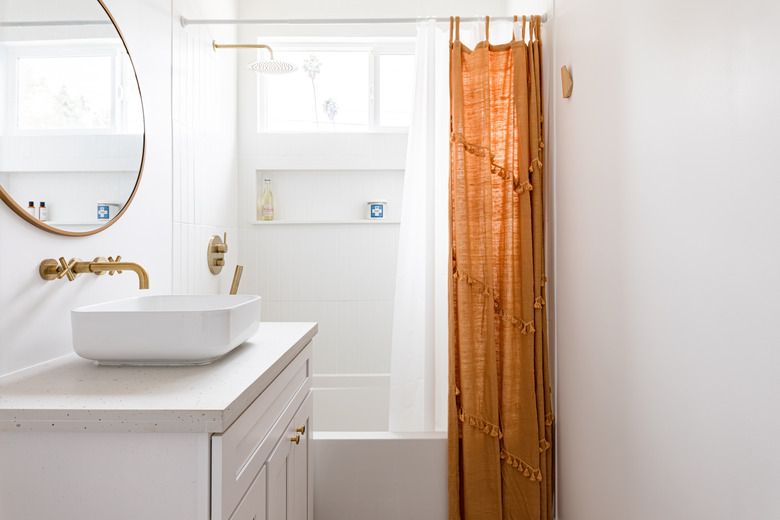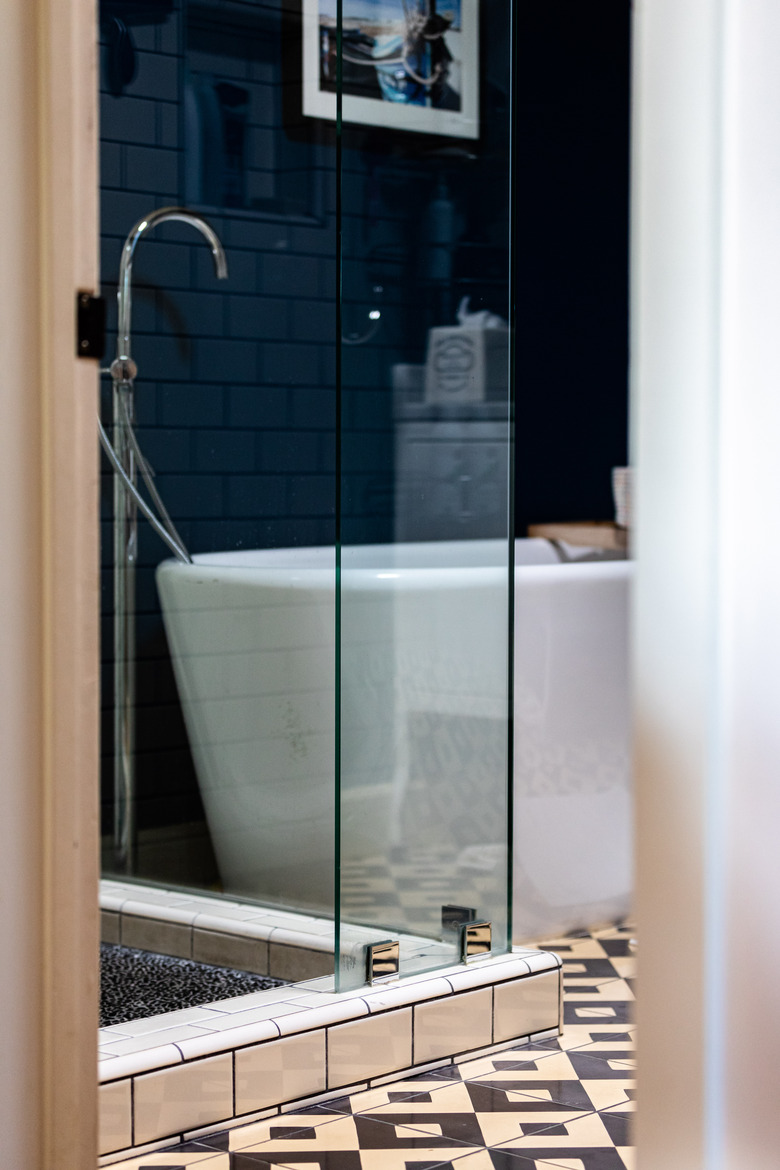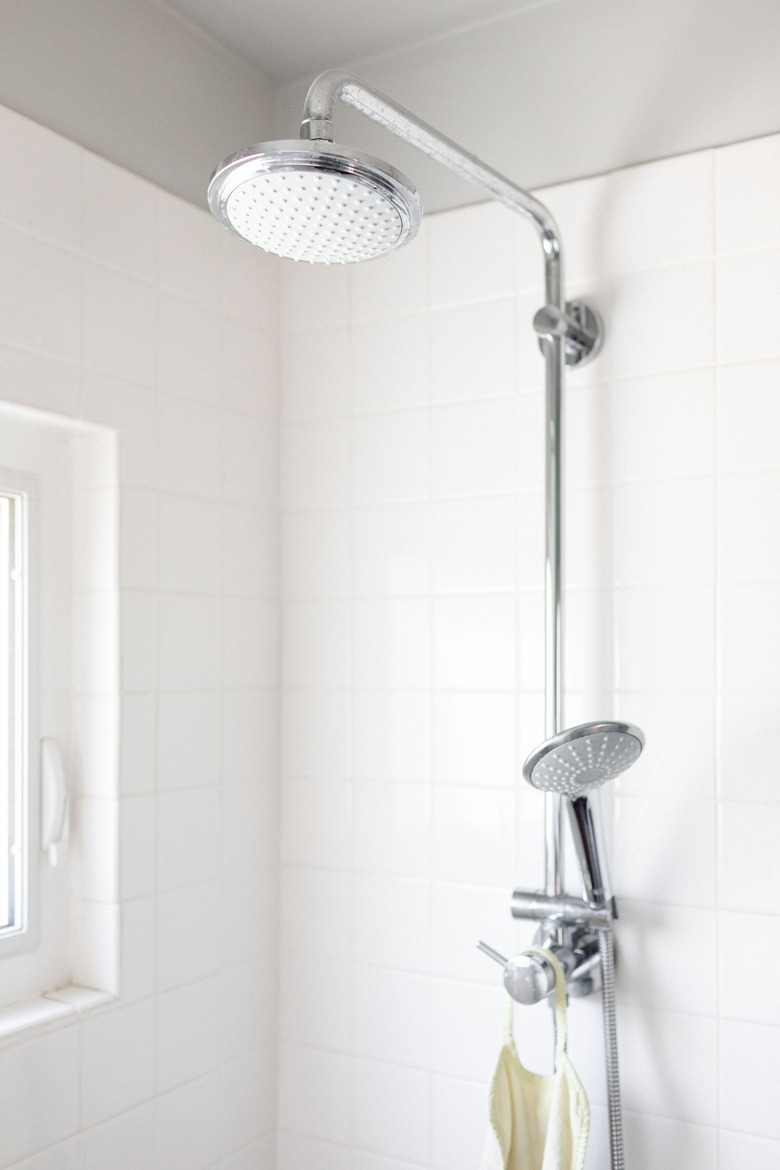Shower Pipes And Water Supplies For Showers: What You Need To Know
If you're like most homeowners, you've never seen your shower pipes, and because they are often hidden behind a tile or stone wall with no access panel, you probably never will until a bathroom remodel or an internal problem with the valve forces you to replace the shower faucet. Because the shower pipes are inaccessible, a leak caused by an installation error would be highly problematic, so although many plumbing jobs around the house are DIY projects, installing the shower valve is one that usually requires a licensed plumber.
If you could see behind the shower wall, you wouldn't find much to mystify you. Most shower systems include the same components and pipe configurations, with small differences. Some builders think ahead and install an access panel behind the shower wall, and if there is one in your bathroom, you can get a flashlight and look at the shower pipes yourself.
The Shower Valve Is the Heart of the System
The shower faucet housing is hidden behind the wall, and the parts you see when you're in the shower, which generally consist of one, two or three handles and decorative escutcheons, are the shower trim. A trim kit usually has an attractive polished brass or chrome finish, but the valve housing isn't nearly as good looking. It's a monolithic brass fitting with a shape somewhere between square and roundish, and it has wings extending out to the sides if the shower has two handles. If the valve controls a tub spout, it may have three handles, which means there's a diverter inside to switch water flow from the tub to the shower.
The hot and cold supply pipes feed into the bottom or sides of the valve housing, the pipe for the shower head extends out from the top and if the valve controls a bathtub spout, another pipe extends downward from the bottom. The valve mechanism may be a cartridge, a ball valve or a pair of compression valves if the faucet has two handles. Ball-valve shower faucets aren't common, and you can usually distinguish them by a dome-shaped collar underneath the handle.
You can replace valve mechanisms and all the parts associated with them, including gaskets, O-rings and springs, by disassembling the faucet from the shower side of the wall, but the valve housing is permanent, as are all the pipes connected to it, and it isn't repairable. If it gets blocked by scale, you might be able to disassemble it for manual cleaning, but if it springs a leak, you have to replace it.
Types of Shower Valves
A basic shower valve has inlets for the hot and cold water supply and an internal mechanism that regulates the flow of each to control temperature and water flow. In double-handle compression valves, each handle regulates the flow of either hot or cold water, and the user has to manually control temperature, but many single-handle shower faucets regulate both automatically. QualityBath.com identifies three types of shower valves:
- Mixing valves are the least sophisticated shower faucets. When you turn the handle, the cartridge or ball valve rotates, and strategically placed holes regulate the relative flow of cold and hot water. It can be hard to get the right temperature.
- Thermostatic valves sense the water temperature and adjust the flow to match the preset temperature.
- Pressure-balancing valves sense the ratio of hot to cold water pressure and automatically control both temperature and water flow to match the preset temperature. This feature prevents the shower from suddenly turning too hot or too cold when someone in another part of the house turns on a faucet or flushes a toilet.
The Rough-In Water Pipes
The 1/2-inch branch supply pipes for the shower usually tie into a 3/4-inch water main somewhere in the house and stub out from the floor or the wall behind the shower. It's up to the plumber who is installing the valve to extend these stubouts with PEX, galvanized or copper pipe as appropriate. In most cases, copper pipe is used, and the hot and cold water pipes are soldered to the valve housing.
When the rough-in pipes come in from underneath and the inlet holes are on the sides of the valve housing, elbow fittings are required to route the pipes into the holes. When copper pipe is used, these fittings are often brass, and they have wings that allow them to be screwed to the framing. This helps secure the pipes so they don't rattle when water flows, which is not only noisy but can weaken the joints and cause leaks.
If an access panel is provided for the shower valve, a professional or DIY plumber will usually install a shut-off valve on both the hot and cold water line. That provides an easy way to turn off the water when the shower valve needs disassembly and repair. Failure to install these valves leaves the homeowner searching for an alternative shut-off, and the only one may be the main water line for the entire house.
Two Other Shower Pipes You'll Find
The 1/2-inch copper pipe for the shower head extends vertically upward from the valve housing and terminates in another brass elbow screwed to a block attached to the framing. This elbow has a threaded inlet for the shower arm, a 1-foot length of chrome tubing with threads on the other end for the shower head.
If the valve also controls a bathtub, you'll find a galvanized or copper pipe extending downward from the opposite side of the valve. This terminates in an elbow into which you screw a threaded nipple for the tub spout. The length of this nipple and whether or not it has threads on the other end depends on the spout. Some spouts have 1/2- or 3/4-inch female threads, some slip on and are held by set screws and some come with a brass adapter that slips into the pipe stubout.
Can I Replace Shower Trim Without Replacing the Valve?
You may want to replace the shower trim, including the handles and the escutcheons, because you're in the middle of a bathroom remodel. If you keep the same faucet model, all you have to do is buy a new trim kit, but changing the model usually (but not always) means replacing the valve and all the shower pipes behind the wall.
Manufacturers such as Moen, which uses only three standard valve housings, have you covered, and as long as you stick with products from the same manufacturer, you can often interchange trim kits on the same shower valve. If you currently have a Moen faucet but prefer the bold look of Kohler, however, you'll have to break into the wall and replace the valve.


